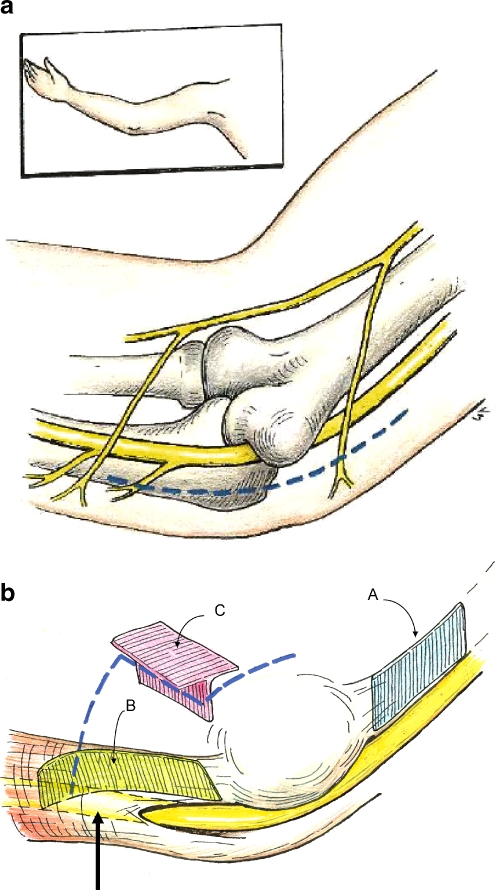Figure 5.
(A) The medial antebrachial cutaneous nerve generally will cross the incision 3.5 cm distal to the medial epicondyle and 1.5 cm proximal to the medial epicondyle. The distal crossing point is extraordinarily consistent. Proximally, the medial antebrachial cutaneous nerve can travel with the medial intermuscular septum. (B) Surgeons should envision not just the proximal medial intermuscular septum (A) as a potential point of compression with an anterior transposition, but also a very similar fascial septum between the ulnar-innervated flexor carpi ulnaris muscle and the median-innervated flexor pronator muscle origin (B). It is this distal fascia that becomes the significant compression issue with transposition of the ulnar nerve. Also, there is very thin fascia overlying the ulnar nerve itself in its location distally between the two heads of the flexor carpi ulnaris muscle that can also kink and compress the nerve with a very sharp edge as the nerve is moved into its transposition location (arrow). Surgeons doing trans- or intermuscular transposition should also remove the fascial plate that is T-shaped in origin and located within the flexor/pronator muscle origin.

